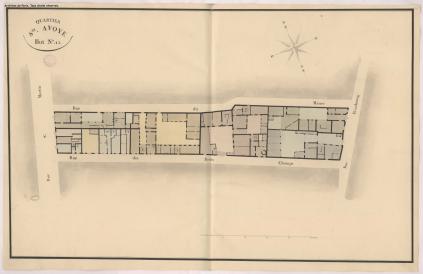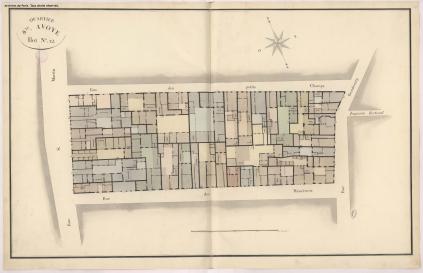Square Piano N.N. Marchand
Paris [a1800]
Mechanism: English simple action
Range: 5 octaves, F1-f3
Stringing: double
Signature: [First name?, unreadable. erased] MARCHAND Facteur // Rue des Petits Champs Martin // N.o 6&4. À PARIS


Archives de Paris, Quartier Sainte-Avoye, F31/86/26


The maker's first name was erased later with massive means. So the instrument can only be determined further by its range typical for the late 18th century. Whether the address' spelling of the Rue St. Martin simply as "Martin" is an indication of the anti-clerical period of the Directoire
(1795-99), can only be guessed. The simple design matches the tastes of this period.
Pre-revolution and pre-Napoleonic keyboard instruments are rather rare and even in a state of fragmentation give witness of a florid piano culture. The affinities to the esthetic and technical developments in piano making beyond the Channel are rather obvious and even grew stronger in the temporary emigration years during the revolution. In the Napoleonic years a strong and leading postion of the Paris firms emerged.



